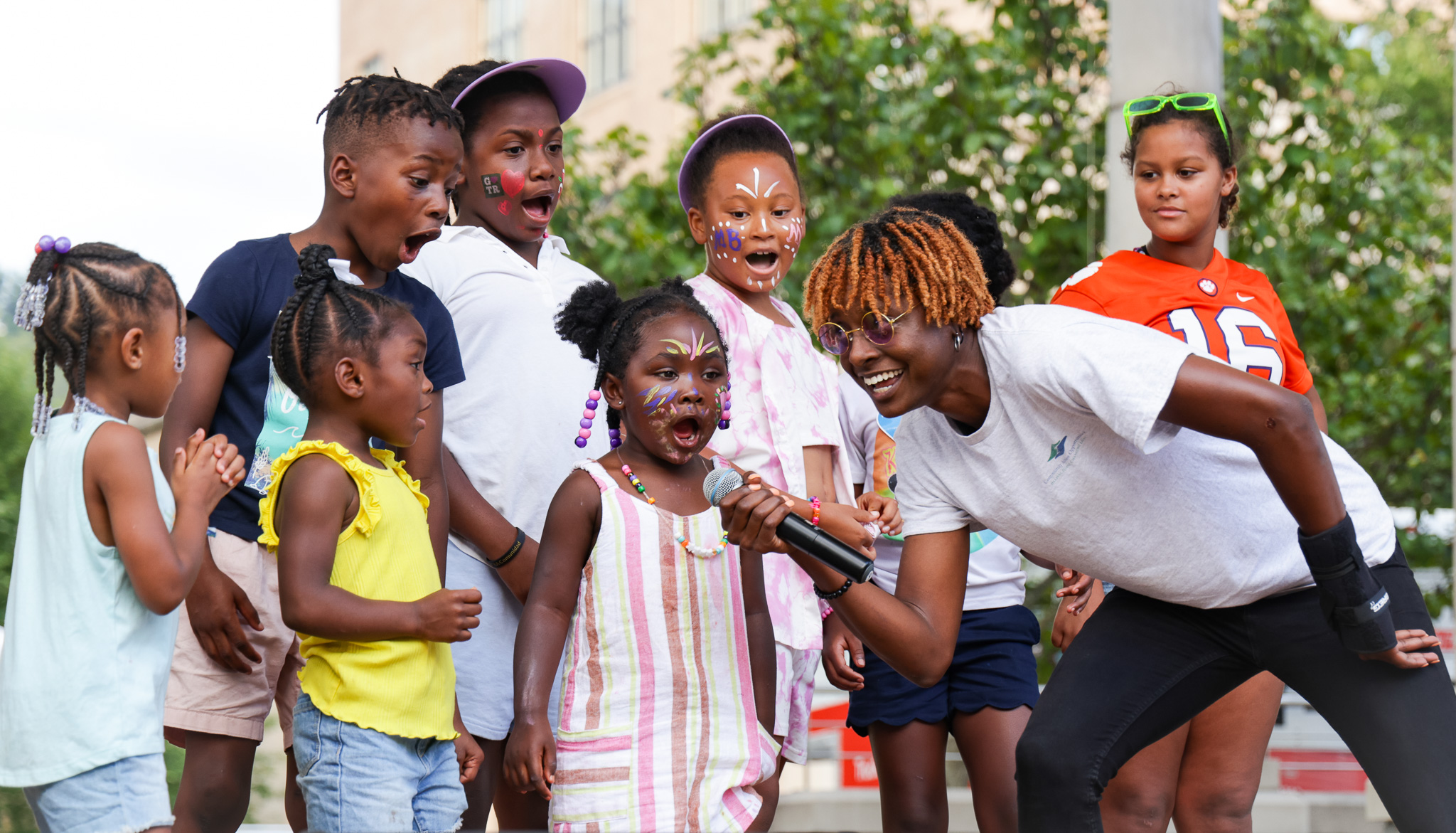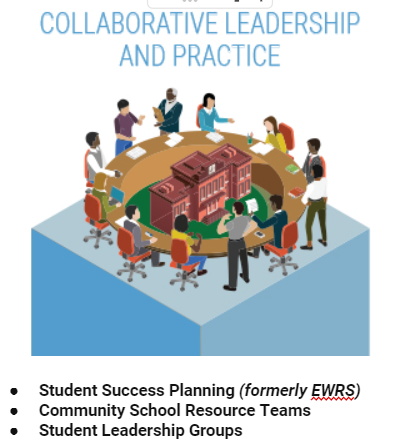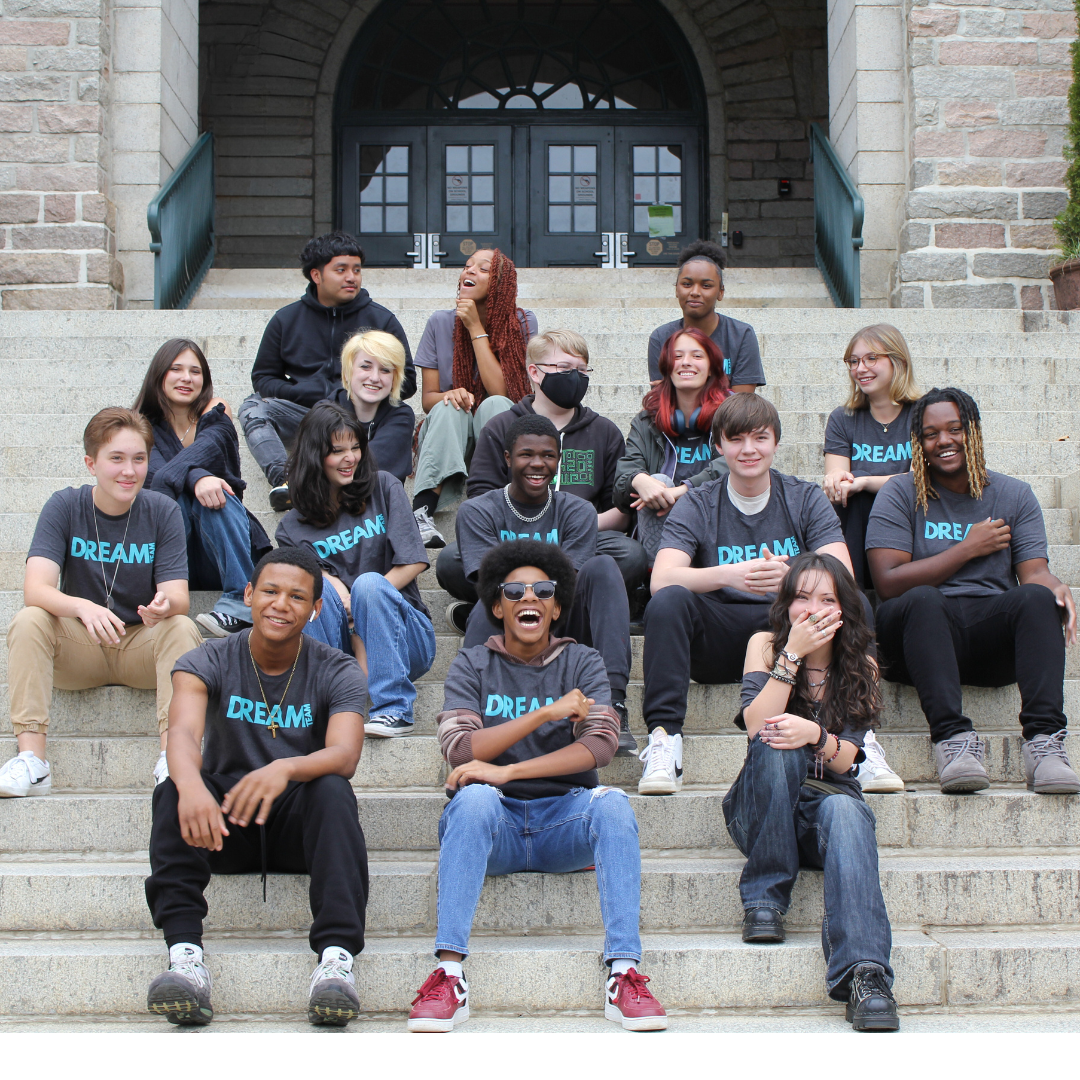Think of the leaders in your elementary, middle, or high school...
Maybe you thought of a kind teacher or one who was a little too stern; possibly the principal popped into your mind, or maybe a club leader or teacher who hosted an afterschool program. These figures are, of course, leaders in the school setting, but the Community School strategy asks us to expand our idea of leaders inside our schools.
Collaborative Leadership is one of the four pillars that hold up the Community School strategy - the method United Way of Asheville and Buncombe County has chosen to use to address the opportunity gap. Along with the other pillars of Integrated Student Supports, Active Family and Student Engagements, and Expanded Learning Time and Opportunities, the pillar of Collaborative Leadership brings the necessary layer of holistic support to our students and families.
There are categories of collaborative leadership. These categories are Community Wide Leadership, Intermediary/Coordination Leadership, and In-school Leadership.
Now, let's dig into Buncombe County specifically and into the leaders of each category.
Starting broad with Community-Wide leaders, in Buncombe County, there is a robust and growing network of visionaries, policymakers, resource groups, and individuals who make up this category. This even includes federal and state policymakers, as their leadership directly affects the schools! Within Buncombe County, many of these community-wide leadership positions are filled with Asheville City School and Buncombe County School administrators, Local grassroots organizations, local non-profits, and passionate individuals. The beauty of the Community Wide Leadership pillar is that it invites all to participate in envisioning a safer and more prosperous future for our students and for them to bring their resources and willingness to work into this pillar.
The second category of Community-Wide leadership is the Intermediary or Connector leadership. Here is where United Way of Asheville and Buncombe County shines. Community School Coordinators, who are UWABC staff, work full time in the schools to connect the schools to community wide leaders and bring invaluable resources to students, family and staff. But beyond the community that Coordinators are building inside and outside the school. UWABC plays a backbone role to United for Youth and is vital in the operation of the Student Success Planning data sharing. The tool that is called Student Success Planning is a shared dashboard of data that is utilized and informed by ACS, BCS, and dozens of organizations working directly with students. This equity-focused data allows all leaders to view essential data like attendance, core course grades, and behavior patterns, all with the goal of working together to discover the best way to support each student individually.
Lastly, there are the In-School Leadership roles; these positions are filled with many of those leaders you may have thought of at the beginning of this blog. However, there are most likely a few in-school leaders that may surprise you. Alongside principals, teachers and other on-site school staff there are student leaders in the making. Here, adult school leaders and community-wide leaders get the opportunity to work collaboratively with students and cultivate an environment that allows ALL students to have leadership opportunities.
It’s in the name of collaborative Leadership; this pillar is all about building an environment that encourages partnerships to flourish. It is also about sustainable ways to keep the momentum of the Community School Strategy, which is a constant state of improvement. Sustainability is stressed in this pillar as leadership can be a hefty lift, and it requires cross-community and inter-generational work.
While it may not always be forefront of the mind when the story of Community Schools is told, there are so many ways the pillar of Collaborative Leadership shows up in Buncombe County.
Just within the Community Schools, there are robust resource teams that are gathered by the Community School Coordinators. If we took a look at Reynolds Middle School, we would see a wonderful example of a well-rounded resource team. From retired community neighbors, health care professionals, grassroots leaders, nonprofit staffers, they are open to any resourced and passionate individuals. At every school, these resource teams meet monthly to stay informed about all the supports being offered, to learn from one another, and to share their skills and resources.
But Collaborative Leadership is not just for the adults of Buncombe County community. As stated before, the Community School pillars are about building sustainability. This means that students must learn to be leaders. And that’s exactly what is happening at many of our Community Schools. We can look at Erwin Middle School for a fantastic example of student leadership. The Welcome Warriors is spearheaded by current students who support new students to the school. This helps acclimate those new students to the school, get to know someone and practice their English if they’re not an English-speaking student while giving current students a leadership opportunity. The Welcome Warriors also meet on a weekly basis to focus on how they can make the school more inviting and accessible for their peers and community.
Along with the peer-to-peer work, the Welcome Warriors of Erwin has to offer. We can look towards two other Community Schools, Asheville High and Middle School to see sustainable intergenerational work happening with the young folks of the city. At AHS, you will find a program called DREAM (Dedicated, Responsible, Enthusiastic, After-School Mentors). This is a youth-centered, paid internship program for high school students to take on leadership opportunities, and one of the biggest ones is mentoring. DREAM members have the option of leading and mentoring middle school students enrolled in IRL, supporting ACSF with administrative tasks, or a combination of both. This afterschool program puts the leadership into the hands of high-schoolers who work to find their own leadership style while simultaneously providing examples of leadership to an even younger generation, keeping the momentum of sustainability for leadership.
The main takeaway for the pillar of Collaborative Leadership is the community it takes to build effective support for all Buncombe County students and families. This pillar stressed the importance of relationship-building in multiple types of leadership groups. It shows that it takes shareholders who are invested with time, care, money, and resources to work collaboratively together to keep this essential community school pillar strong. From federal, state, and local governments to the impassioned local leader, the community of leaders must be intergenerational and diverse to continue building a better future for each unique school community.
Don't Stop There
Learn more about the other Community School Pillars: Integrated Student Supports, Active Family Engagement
Support this work
Stay Updated on all things Community Schools





